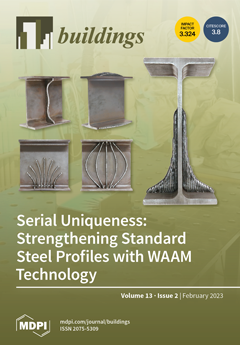The current study depicts the effects of different insulation materials and fuel types on the cooling and heating performance of buildings situated in hot and dry, warm and humid, composite, and cold climatic conditions in India. Ten different locations chosen from diverse climatic
[...] Read more.
The current study depicts the effects of different insulation materials and fuel types on the cooling and heating performance of buildings situated in hot and dry, warm and humid, composite, and cold climatic conditions in India. Ten different locations chosen from diverse climatic regions were selected, and various potential parameters for expanded polystyrene and extruded polystyrene insulation materials were evaluated. Potential parameters, such as optimal insulation thickness, annual savings, and payback period, were computed for cooling and heating requirements and were found in the ranges of 0.0428–0.891 m, 10.83–19.19 $/m
2, and 1.49–2.36 years for cooling, as well as 0.0063–0.1522 m, 0.29–55.92 $/m
2, and 0.95–6.52 years for heating, respectively. An emission analysis was also carried out for the estimation of greenhouse gas (GHG) emissions by the engagement of optimal insulation thickness for heating. The GHG emissions from natural gas, coal, and diesel by the employment of various insulating materials were found in the ranges of 5.39–11.28, 9.47–32.68, and 2.26–4.51 kg/m
2-year, respectively. A correlation formulation (power) for optimal insulation thickness was also carried out. For checking the preciseness of the developed mathematical models, statistical tools were utilized, and their obtained values in the satisfactory range signified the accurateness of the developed models.
Full article





